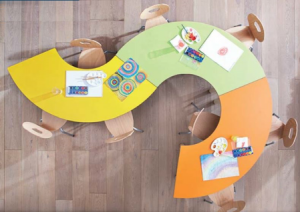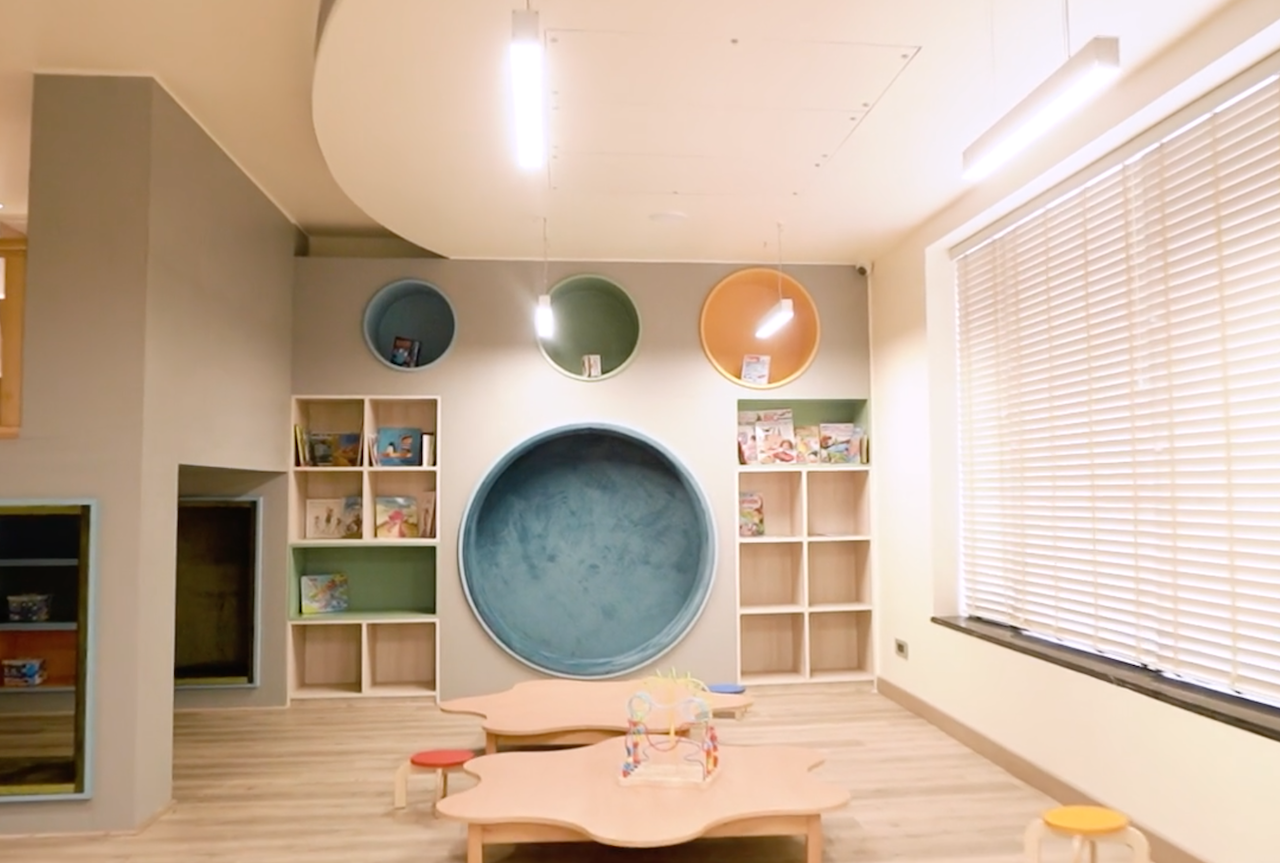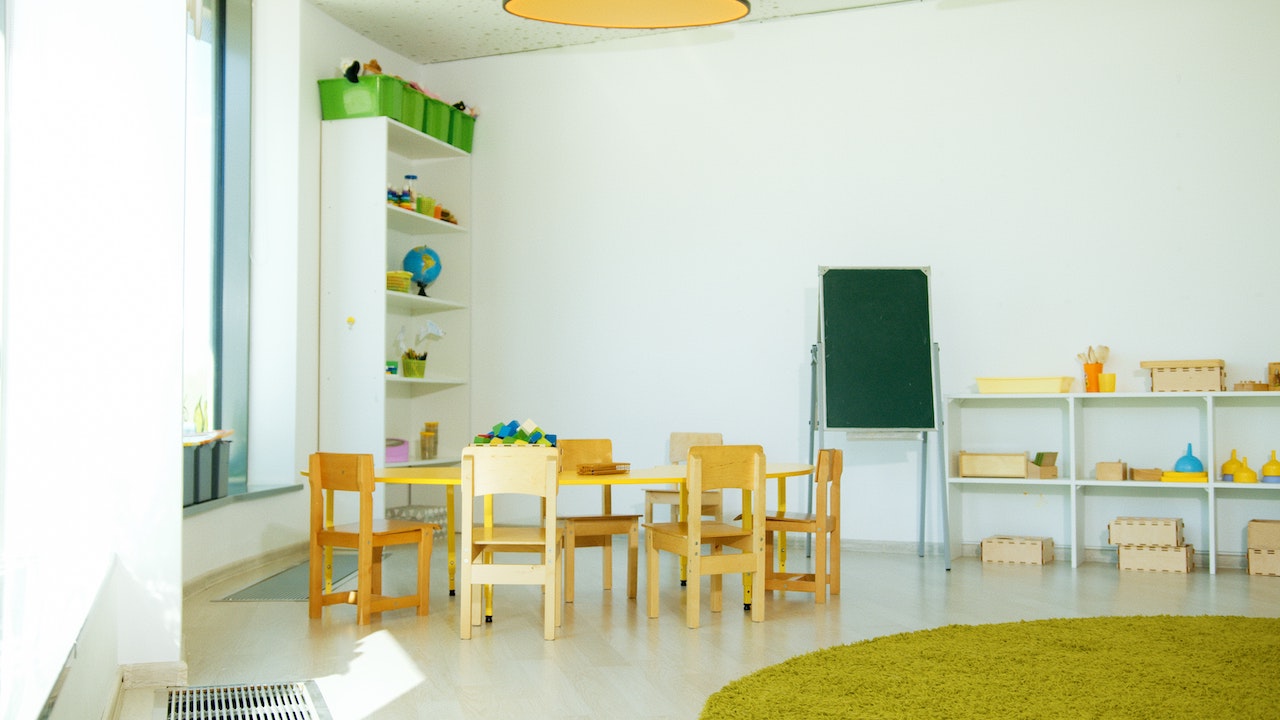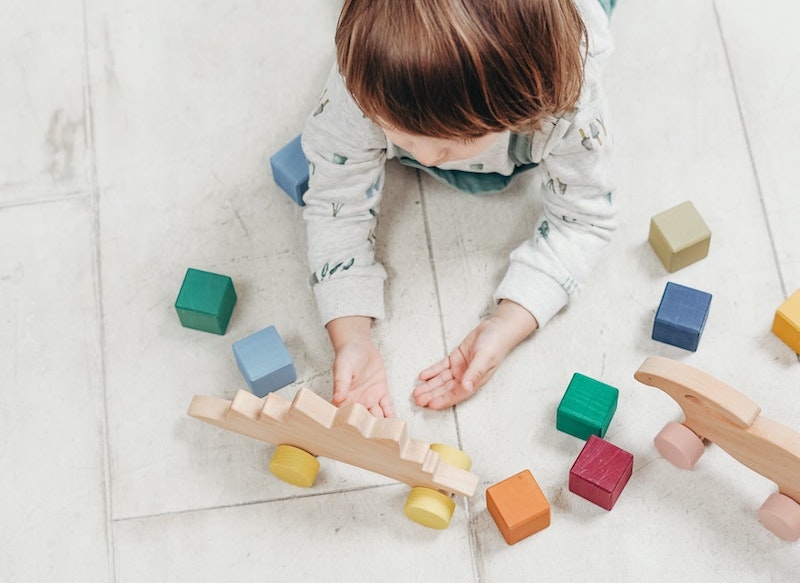 While setting up a new school not enough effort is devoted to the selection of appropriate furniture. One suited to design & function. In a traditional school, it consists of a standard set of desks in a limited set of sizes. Progressive investors, who value open classrooms, understand the value of planned furniture. The lack of choices hampers their decision.
While setting up a new school not enough effort is devoted to the selection of appropriate furniture. One suited to design & function. In a traditional school, it consists of a standard set of desks in a limited set of sizes. Progressive investors, who value open classrooms, understand the value of planned furniture. The lack of choices hampers their decision.
So what about furniture? Age appropriate and comfortable. While selecting products labelled ergonomic, it is important to understand how? How is the shape of the furniture suited to children or teachers? Children should be able to sit comfortably for long durations, able to see appropriate presentation/discussion areas. Furniture must be safe, no sharp edges, splinters, nails or spaces. Children injure themselves with these. Furniture manufacturers must use safe materials, paints, plastic. The decision makers must consider the certifications of the furniture manufacturer. Give preference to an accepted standards agency.
Classroom furniture is a teaching tool that allows the learning to be student-centered. Inquiry based learning, experiential learning or project based learning are pedagogies supported in a 21st century classroom. Furniture can also play a role in supporting innovative curricula. The furniture should be adaptable to varied layouts. Furniture that facilitates collaboration, communication, traditional discussions and presentation. It must be multi-function. The product brochures illustrate the various applications of the product in a classroom. Do those arrangements suit the specific curriculum plan for the school. Furniture can separate spaces, create corridors, niches and other informal spaces for study and discussions.
 Open classrooms serve as multi use spaces. They are expandable to create larger areas through movable partitions and glass walls. They suit traditional lecture style classrooms and modern group activities. Likewise furniture should also be easily movable. Some of it should be movable by the children themselves. Modular so that you can add more without any aesthetic changes. E.g. it should be possible to arrange the desks for a group discussion or for individual work.
Open classrooms serve as multi use spaces. They are expandable to create larger areas through movable partitions and glass walls. They suit traditional lecture style classrooms and modern group activities. Likewise furniture should also be easily movable. Some of it should be movable by the children themselves. Modular so that you can add more without any aesthetic changes. E.g. it should be possible to arrange the desks for a group discussion or for individual work.
Projects or inquiries are an integral part of the innovative classroom. Students need display areas and storage for these. This must be of 2 types, one that is accessible by students and one that has restricted access. This requires close collaboration & planning with the class teachers or the curriculum head. Furniture can help group cohesion, communication and collaboration.
The best designed and safe furniture is available from several manufacturers in Europe. Most come highly recommended. We believe in them. They meet high standards of quality and have delivered for several years. In doing so, they have often backed new designs with research to have a sort of mastery over their products. In general, the workmanship is of a high quality and these come with a warranty of performance. Cost can often be a constraint. Suppliers are provide better rates with larger orders. This may not always be possible.
Often the next resort is China. Suppliers who have a wide array of products that also suit the school needs. They may not have the design history but have delivered over time. This is also a viable solution. Manufacturers in China deal in large volumes. They have greater experience and better craftsmanship. My advice. If you cannot find a local vendor who can support you, travel to China yourself. Do not pick the cheapest option available.
The first concern should be of the materials used in manufacturing them. The best way to check this would be to check the standards they meet. Second, are there moving parts that will need replacement or repair? Will they be available to you locally at reasonable prices? What is the cost of the product after considering shipping & freight? Taking care of these concerns should ensure the right decision.
There are local manufacturers who produce reasonable quality furniture. Our clients have had varied experiences. Some have easily met their requirements at reasonable costs. Others have been somewhat satisfied, others found them too expensive. The proximity of the local manufacturer and the higher engagement helps. Clients sometimes are not able to find all their solutions in one place. There is flexibility in dealing with local manufacturers. Less concerns of the availability of local parts and servicing.
The last option is of local fabricators to replicate the furniture design. This is acceptable for simple cupboards or lockers but not for specialized furniture. The first concern is of craftsmanship, it is not easy to get the finish one gets in a factory produced goods. There is a limit to the guarantee a craftsman can provide. It’s difficult to have standardized parts. Each servicing or repair option will be a unique request. Key intricacies of the product design can lost. And as a result the functionality. The substitute material used is manufacture can influence the outcome. It is more difficult to set a budget at the outset. On occasion this can become the most expensive option. We recommend this option to our clients when there is control on input material, design and cost .
We understand that based on the situation different options will suit the clients. We ensure that the clients weigh all these options. That their frame of reference has the stakeholder requirements and the school curriculum.
A classroom that fulfils these criteria, blends with the school design concept and has colours that helps children channel their attention is one that is for a 21st century school.



